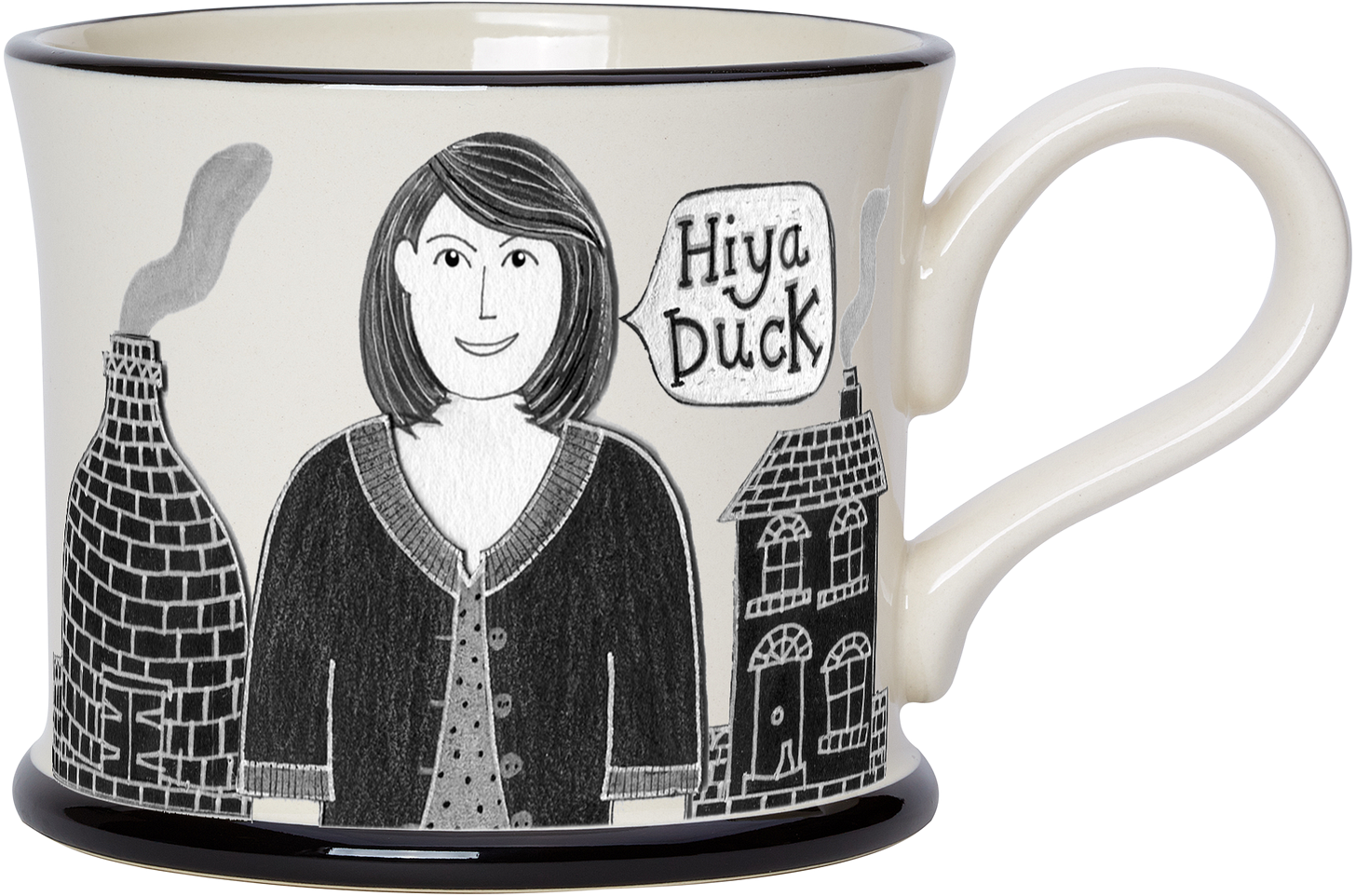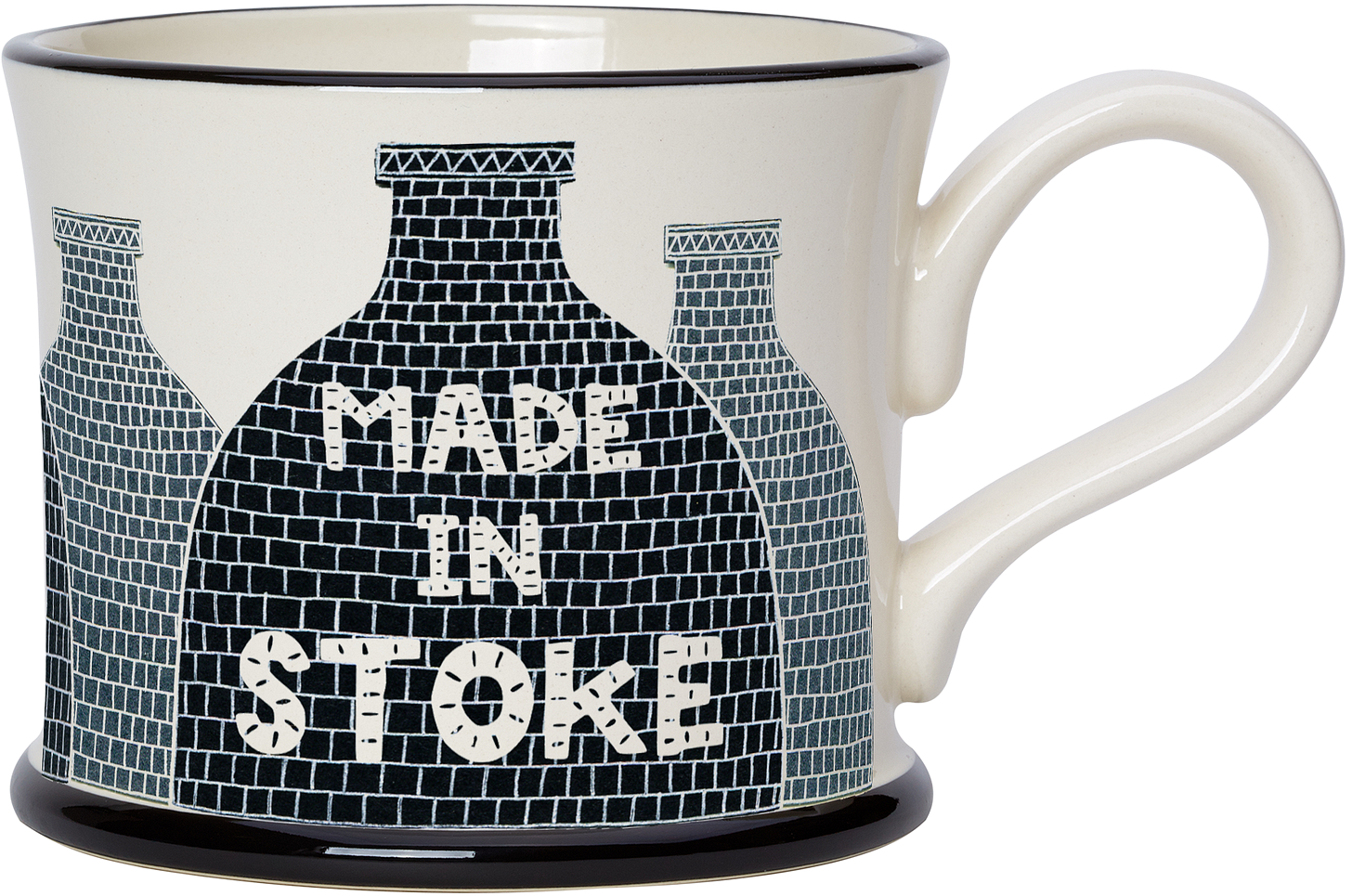Stokie Bloke Turns 20
A mug-shot of The Potteries. Famous Stokie ware celebrates twenty years.
It's not often that someone can capture the essence of a city in a drawing. But being able to “deliver it on a plate” time and time again over 20 years arguably requires an even greater skill.
Somehow, Jonathan Plant has managed that with his enduring, and endearing, range of Moorland Pottery ceramics.
The fact that Robbie Williams was one of the first people in the world to own a set of the new mugs, bought for him as a birthday present by his sister, Sally, obviously helped. But anyone who catches sight of the different, distinctive and highly desirable designs quickly understands what all the fuss is about.
The almost overnight success story of what was originally called Stokie Ware surprised even Jon who, along with partner Adrian Tinsley, founded Moorland Pottery in 1987.
Housed within the same Chelsea Works premises which renowned art deco designer Susie Cooper rented from Royal Doulton for two years, and which still boasts one of the city's last surviving bottle kilns, the business is a prime example of the survival skills that are required these days in the British pottery industry.
If “Stokie Bloke” was an integral part of Moorland Pottery’s journey from being just another struggling potbank in Burslem, the Mother Town of The Potteries, then what followed has arguably been one of the greatest success stories for the ceramics industry in the 21st century.
Stokie Ware portrayed the spirit of The Potteries in words and pictures, and struck a chord with most Stokies who saw it. We all love to have bragging rights, and Moorland Pottery’s mugs offered them by the cup-full.
Such was the success of the initial range that Jon and Adrian found themselves being approached by retailers in other parts of the country to produce similar ware for Brummies, Yorkies, Geordies and just about every other dialect-distinctive destination.
Each story is told in Jon’s own brand of naïve cartoon-like artwork; and that’s a much-overlooked aspect of its own success. Because each design is exactly that: a work of art. While some artists prefer paper as their blank canvas, Jon chose ceramics.
Twenty years on, it’s finally all being given a degree of the recognition it so richly deserves, with an exhibition at the Potteries Museum and Art Gallery which is scheduled to run for a year.
After years of putting poetry onto pottery, and smiles onto the faces of everyone who sees it, it will not only offer visitors to The Potteries an insight into the Stokie blokes who created the ware, it will also help people decide for themselves whether, in this instance, Art imitates Life or Life imitates Art.
In the early days of Stokie Ware, Jon explained: “I'm relying on my own experiences and memories of The Potteries, and seeing the images in black-and-white. It sounds a bit dramatic, but it’s almost like they are drawing themselves."
They’ve certainly taken on a life of their own since then, and in doing so have helped to carry the name of Stoke-on-Trent worldwide.
Anyone who has lived in The Potteries for long enough knows why “locals” always turn over a cup, a saucer or a plate, wherever they are in the world.
That simple act very quickly becomes second-nature for anyone living here. And while local author Arnold Bennett wrote about that, saying you could always tell if someone came from Stoke-on-Trent, just by looking around a restaurant or café, Royal Doulton (in its heyday) used to offer its customers free membership to a “Turn Over Club”: the idea being that if ever a card-carrying member was challenged by a waiter or someone on the next table about this cup-turning activity, they could show their card and say, “I’m from Stoke-on-Trent, I’m allowed to do this”!
Part of the story is deciding whether to call Jon a potter, or an artist. When you look at his work closely, it’s not only funny, it’s also great artwork - created in a very clever and intricate way.
It’s also a reminder of a remarkable link between Arnold Bennett’s novel The Card, and Jon Plant.
Discussing the recognition being heaped on the main character, Henry Machin, someone asks: “What great cause is he identified with?”
“With the great cause of cheering us all up,” comes the answer.







Did you mean Denry Machin?